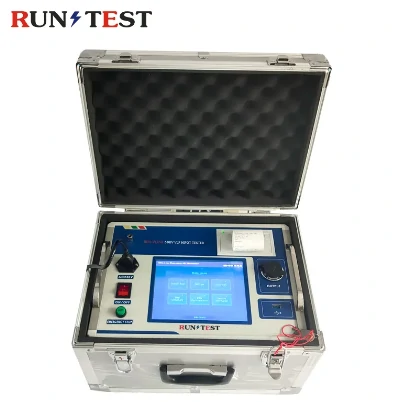What is the Calibration Process of High Voltage Testers?
June 6, 2025
High voltage testing is one of the most important steps in the process of verifying the safety and trustworthiness of electronic equipment. It not only certifies the insulation strength and overall soundness of various electrical components, systems, and equipment but also ensures the safety of the equipment and personnel. High Voltage Tester is the most important instrument for this process. In this article, we will provide information about the calibration process of high voltage testers, the significance of accurate readings and operational methods of Hipot Tester.

Need of Calibration
Calibration is an essential process, through which your High Voltage Test equipment is checked for its precision and reliability in respect of measurements. It relates to a situation where a tester, that has not been calibrated for a long time, measures wrong and therefore causes the device to be unsafe and lead to unsafe operations. By means of occasional calibration, which includes corresponding to the exact image of a Voltage Tester, safety and performance are ensured.
The Calibration Process for High Voltage Testers
1. Preparation
Before you kick off the calibration process, gather up all necessary equipment and tools. This including:
- The Hipot Tester to be calibrated
- A calibrated reference voltage source
- Measurement devices such as multimeters or oscilloscopes
- Personal protective equipment like insulating gloves and safety shoes
Ensure that the testing environment is safe and free from any hazards.
2. Visual Inspection
Carry out a very detailed visual inspection of the High Voltage Tester. Look for any physical damage, loose connections, or worn-out components. Check that all cables and connectors are in the right condition.
3. Setting Up the Calibration Equipment
Connect the Hipot Tester to the calibrated reference voltage source. Confirm that the setup corresponds to the specifications of the maker.
Have any other questions? Welcome to contact us, we will serve you wholeheartedly!
4. Performing the Calibration
- Power On: Switch on the High Voltage Tester and let it warm up if required, as some testers need some time to warm up for better performance.
- Set Voltage Levels: Set the tester to the required voltage levels for calibration.
- Measure Output Voltage: Use the reference voltage source to check the output voltage from the Hipot Tester.
- Adjust Settings: In case of voltage or value of High Voltage Tester settings does not match, according to the instructions of the manufacturer, do an adjustment to the settings.
- Repeat Measurements: Do a series of measurements in different voltage levels (e.g. 30kV, 40kV, 60kV) to verify the consistency of the device’s performance across the range of the tester.
5. Documenting Results
Update the record of the calibration results by entering the initial readings, changes made, and final measurements. The calibration log is used for tracking the working status of your High Voltage Tester that reflects upon the performance and life of the instrument.
6. Final Inspection and Maintenance
After successful calibration, perform a final check-up of the Hipot Tester to make sure it functions properly. Wipe clean the device from any dirt or dust and store it in a safe area.
Applications of High Voltage Testing
High voltage testing is a basic necessity in various fields, which include the following:
- Power Transformers: Confirmation of insulation health to prevent malfunctions.
- Switchgear: The performance to operate at high voltage is verified by the test.
- Cables: Evaluation of the insulation strength, especially for the power line, having a long distance transmission.
- Motors and Generators: Checking the status of the insulation systems.
Safety Considerations
When carrying out high voltage testing, it is very important to have security in mind. Use these safety measures:
- Make sure the equipment is grounded properly to prevent electrical shock.
- Dress in the correct PPE, for instance, insulating gloves and safety boots.
- Describe the testing areas as hazardous zones to let the staff be aware of the dangers.
- Always supervise the testing equipment from remote when it is feasible to add a layer of protection to this whole operation.
Conclusion
The calibration procedure of High Voltage Testers is a must to guarantee safety and reliability in electrical systems. Regular calibration not only enhances the accuracy of your Hipot Tester but also minimizes the risk of equipment failures during operation.
If you are in need of high-quality High Voltage Test equipment, you may explore our range of products, for example, the 80KV Very Low Frequency High Voltage Generator and other testing instruments that you can trust. Contact us now to get detailed information about our offerings and learn how we can help you to maintain the safety and performance of your electrical systems.
